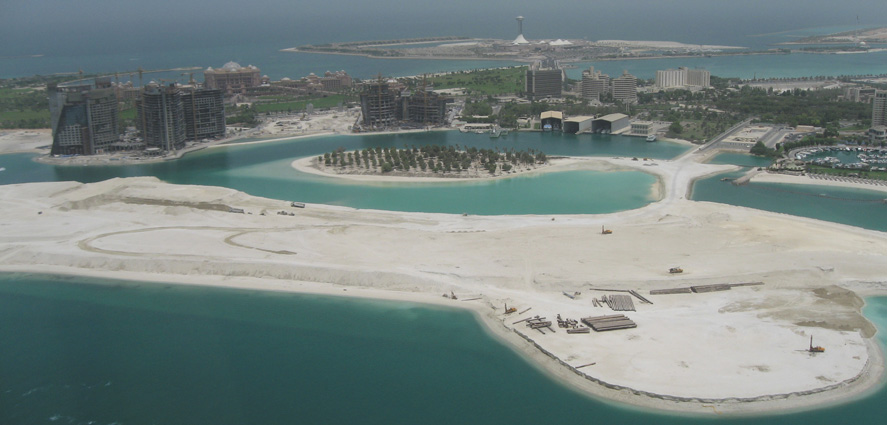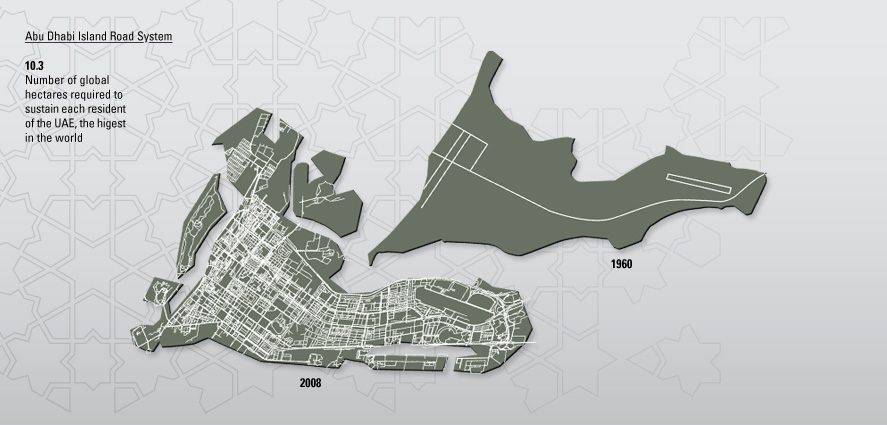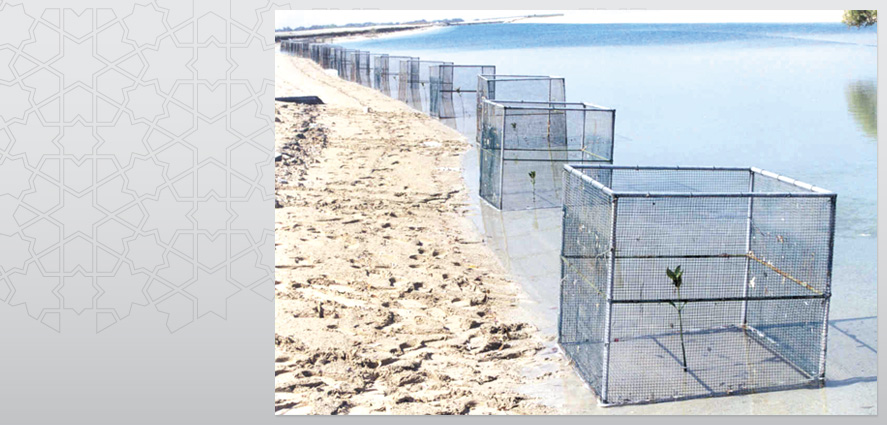
Growth of Abu Dhabi

Growth of Abu Dhabi
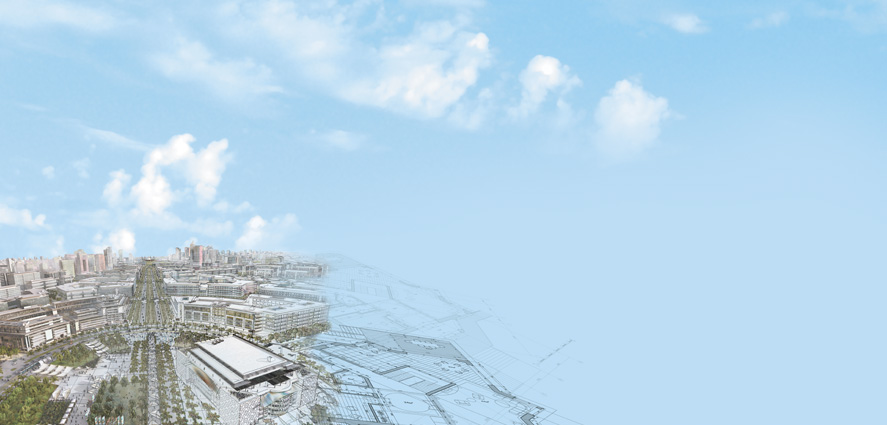
The Emirate of Abu Dhabi's exceptional growth has involved interdependent processes including urbanisation, population growth and economic diversification. Combined, these processes have had significant impacts on the social as well as natural environment.
As urbanisation expands the Emirate's cities, they attract both investment and people from near and far. As the city of Abu Dhabi grows and diversifies, aided by globalisation, the business sector continues to cluster in ever-taller offices, hotels and buildings in a densely urbanised Central Business District (CBD). It is here that multinational companies congregate seeking business advantage and efficiency.
Throughout the Emirate, especially in its urban areas, large inflows of expatriates seeking work change the cultural landscape and population profile but also impose demands on resources such as housing, land, water and power. This influx, along with a historically high birth rate among Emiratis, will continue to have a significant impact on the Emirate's population structure.
These interlinked processes continue to reshape the Emirate, especially the city of Abu Dhabi, both with benefits and with significant environmental impacts. The major challenge for the Emirate, and for other high growth areas around the world, is how to balance the positive and negative consequences of growth in a sustainable manner.
Momentous Urbanisation
Around the beginning of the 21st century, the world passed a momentous milestone when the population residing in cities exceeded 50% of the total global population. Urban evolution started around 8,000 years ago when primitive settlements in geographic locations favourable to trade and agriculture grew into villages and towns. Some persisted and grew into cities. This was an incremental process that included centuries of mixed fortunes, which sometimes involved the complete collapse and disappearance of ancient cities.
In contrast, the city of Abu Dhabi has achieved this extraordinary evolution in mere decades, transforming itself from a couple of small coastal villages into a metropolis of global significance that continues to expand at an exceptional pace. Today, well over 80% of the Emirate's total population of 1.7 million lives in Abu Dhabi city and its suburbs.
Growth and Evolution
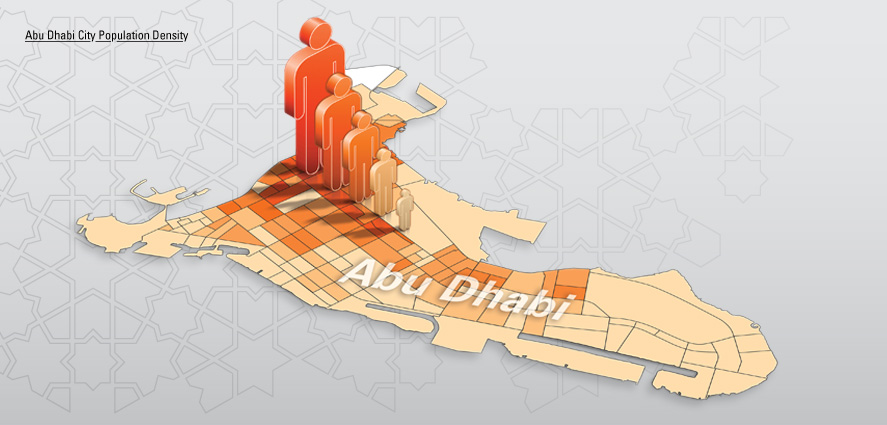
The city of Abu Dhabi has experienced phenomenal urban growth. Initially situated mostly on Abu Dhabi Island, the urban area has spread inland and onto adjacent islands and now covers approximately 782 sq km of land. The coastal zone is particularly favoured for expansion, as bridges and highways have made the landscape more integrated and accessible.
Towards a Sustainable Emirate
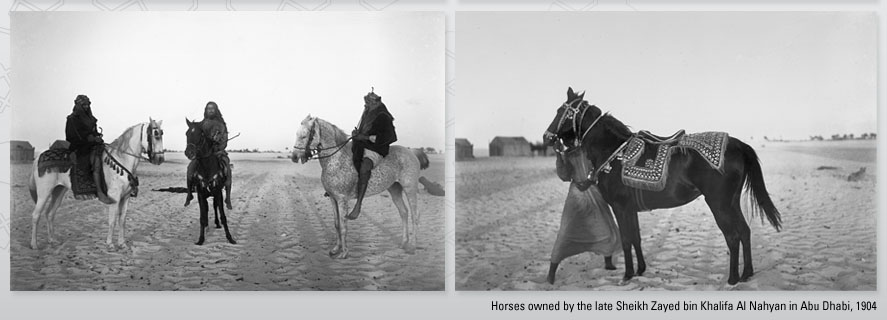
History has shown that environmental factors play a significant role in determining the success of any population. Many ancient settlements appear to have been abandoned due to changing conditions such as depleted water resources or desert expansion. Today, with most of the UAE's major cities, such as Abu Dhabi, located along vulnerable and low-lying coastal areas, predicted sea level rise in coming decades as the result of global warming could threaten their habitability.
Moreover, the population growth projected to take place in the Emirate of Abu Dhabi imposes unique and intensive demands on resources, both human and natural. However, evidence suggests that urbanisation could lower the per capita footprint of a large group of people. To ensure that these benefits are realised, urbanisation and population growth must be monitored to ensure that its negative effects are appropriately addressed.
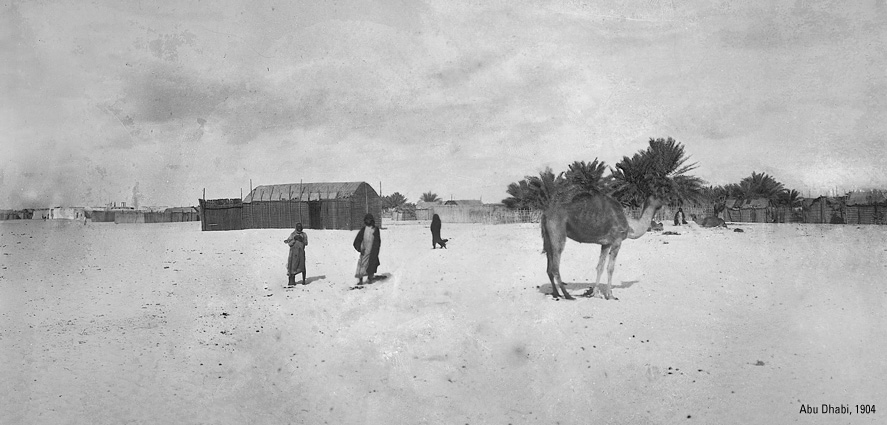
Emirate of Power
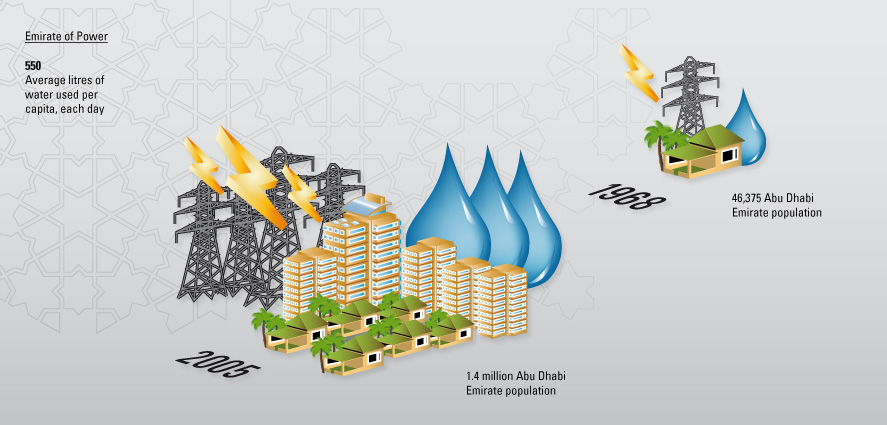
Abu Dhabi is a powerful symbol of human development and an enduring aspect of the cultural and economic landscape. Today, the Emirate displays a distinctive ‘landscape of power' shaped by corporate and government decision-making, financial transactions, invest-ments in cultural facilities, tourist amenities and expanding services. Globalisation has allowed Abu Dhabi to become more closely integrated with distant regional and global economies. International trade, commerce and financial transactions spread the Emirate's influence worldwide.
The city of Abu Dhabi is fast becoming a key node in a global network of influential cities. It is attaining the status of a ‘gateway' city by opening doors to international businesses and forging linkages with multinational companies in the Emirate, the Gulf and across the globe. The ultramodern skyline of the city is a reflection of the interlinked processes of globalisation and urbanisation.
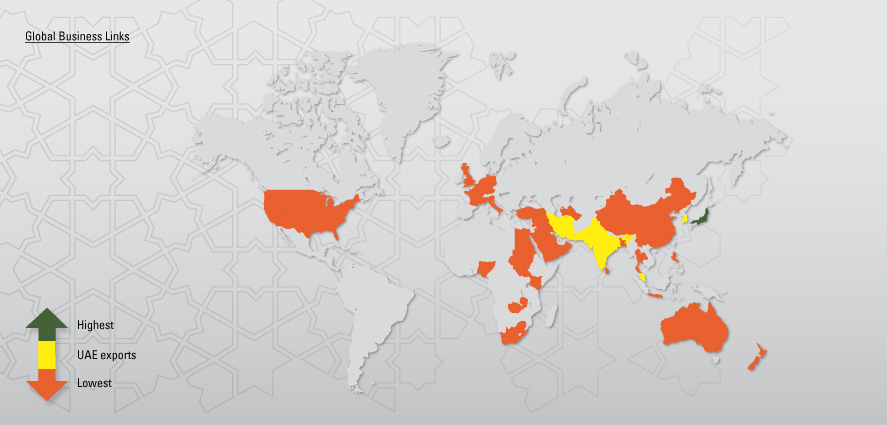
Pressure and Control
The pressure to urbanise along the more desirable coastal zone has led to land reclamation and island building projects that recover land from the sea. In some areas, this process has conflicted with environmentally sensitive and biologically diverse areas such as mangrove forests and lagoons. The degradation of natural habitats, especially along the coast and offshore islands, is a cause for concern requiring conservation management.
As the Emirate's population increases, lifestyle demands of middle and upper income residents and the everyday demands of a quickly growing lower income pool of residents place undue pressure on the environment. Energy production and already-strained water resources are further put to the test.
Urbanisation in the city of Abu Dhabi, resulting in increasing population densities, has focused attention on environmental problems such as pollution and waste management due to ever-higher volumes of solid waste and wastewater. Furthermore, as the natural land surface disappears under concrete and asphalt, surface water run-off introduces pollutants into sensitive coastal habitats while air pollution and exposure to high noise levels increase.
As urbanisation gathers pace, innovative methods for controlling growth within a master planning framework are being implemented through improved urban design, planning, as well as monitoring and tighter regulations.
